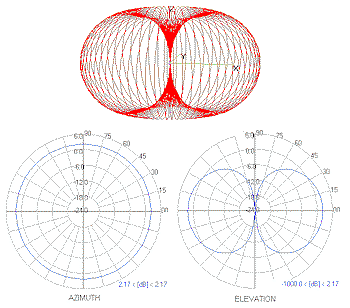Radio Basics
Before launching into improvement techniques, let's first spend a little time building a "mental model" to use in visualizing how wireless LAN signals travel through your home or office.
The simplest model is that of light - a naked flashlight bulb operating off one battery to be more exact! The analogy works well in an "open field" environment where there is a clear line of sight between the bulb (your Access Point or wireless Router) and your eye (your wireless-equipped laptop), but requires a little bit of tweaking for an indoor environment.
However, if you picture your home's walls and ceilings not as solid objects, but more like translucent panels with varying opacity, the resulting imagery is accurate enough for our purposes. The more panels between the bulb and your eye, the tougher it will be to see the light. The number and location of other "light" sources - 2.4GHz cordless phones, microwave ovens, etc. - will make it difficult, or even impossible to see the flashlight bulb instead of the interfering sources.
It's also helpful to visualize how the radio signal radiates from your access point or wireless router's antenna(s).

Figure 1: Simple dipole antenna radiation pattern
(click on image for a larger view)
From Antennas Enhance WLAN Security by Trevor Marshall
Used by permission
Figure 1 shows the radiation pattern for the dipole-type antenna that comes with most access points and wireless routers. The red "donut" at the top is a 3D representation of the energy radiating from the antenna, which you should picture as sticking up through the "donut"'s hole. The circular plot at the lower left is an Azimuth plot which shows the energy pattern from a top (or bottom) view, while the right-hand plot is an Elevation (side) view. You should look for Azimuth and Elevation plots for any antenna that you are considering buying, since they give you essential information for determining whether an antenna will work in your intended application.
You can see that a dipole is an omni-directional antenna, since its energy pattern is equally strong over all 360 degrees around it. Note also that the pattern is not a perfect sphere, but is flattened slightly on the bottom and top. If the radiation pattern were a perfect sphere, i.e. spread out equally in all directions, the antenna would be a perfect isotropic radiator.
But since every antenna type concentrates radiated (or received) energy in some way, that concentration increases the radiated signal output or sensitivity to received signals. The energy concentration is referred to as gain, and is expressed in units of dBi (decibels relative to isotropic radiator). Given that the dipole is the simplest antenna type, it also has the lowest gain - about 2.15dBi (usually rounded up to 2.2dBi).
I'll have more on antennas later, but with these basics under our belt, let's move on to some wireless improvement!